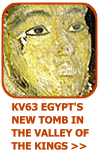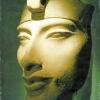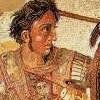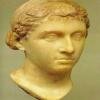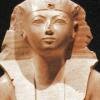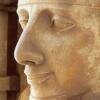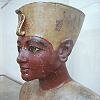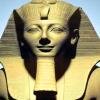|
|
|||||||||||||||||||||||||||
|
|
Pharaoh - the divine and the mortal The idea of kingship and the divinity of the pharaoh were central to Egyptian society and religion, with each king considered to be a combination of the divine and the mortal. According to Egyptian legend, the first kings of Egypt were to become some of country's most famous gods. We really do not know whether these individuals actually existed in human form or what regions of Egypt they may have ruled over. Only at the end of the Predynastic period, prior to the unification of Egypt, can we recognise specific kings who most likely ruled over either Lower or Upper Egypt. According to many sources, the first real king of a unified Egypt was Menes. He would have ruled around 3100 BC, but there is little if any archaeological basis for this name. Most scholars today believe that he may have been a king named Narmer, or more likely still, Aha, two figures that are better attested in the archaeological record. The king was generally considered to be an incarnation of the falcon god Horus and the posthumous son of his father Osiris - the divine king slain by his brother, Seth. Horus fought his uncle Seth for the return of the throne, and this process would be symbolically demonstrated in the "accession process" - the proper burial of the new pharaoh's predecessor. The new pharaoh would take the role of Horus, carrying out the last rites of the deceased Osiris. Ideally the kingship was passed down from father to son, and each king was usually keen to demonstrate to his subjects that he was the "chosen" heir whose right to rule was ensured by his own divinity. Reliefs in temples, tombs and palaces stress the King's divine birth and his function as a representative of the gods was to preserve and restore the original harmony of the universe, imposing order and preventing chaos. There were a number of instances where the heir's coronation as a co-regent took place prior to the current pharaoh's death. This has led to much confusion amongst scholars, as in some instances, the co-regent's regnal years were counted only after the death of his father, whilst in other circumstances they were included from the moment of the coronation.
Other famous Ancient Egyptians include Nefertiti, the beautiful wife of Akhenaten and mother to his six daughters. She is often portrayed wearing a unique style of crown, and officiating in religious ceremonies alongside the king. In one instance she is even shown smiting a foreigner, a traditional pose of the pharaoh. The famous painted limestone bust of Nefertiti, now displayed in the Berlin Museum, was discovered in the workshop of the sculpture Thutmose at el-Amarna, by the German excavator Ludwig Borchardt. IMPORTANT NOTE: The precise dates of the Egyptian Dynasties and of individual reigns are still the subject of much scholarly debate. Students and other individuals who use this website should therefore be aware that the dates shown for the dynasties and individual reigns throughout this site may sometimes differ to the dates that are used in other publications. |
||||||||||||||||||||||||||

|
|||||||||||||||||||||||||||
|
|||||||||||||||||||||||||||





